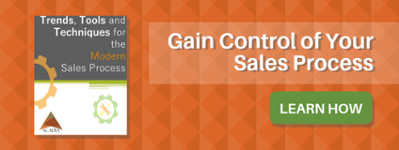What's your sales enablement plan? A look at sales enablement vs. marketing
Picture an assembly plant, in any town, any industry. Steve works on an assembly line at this plant and receives a sub assembly to integrate into the equipment he is building. What he doesn’t know is that the assemblies weren’t properly leak tested and don’t meet requirements. If Steve isn’t aware that leak testing is required or doesn’t know how to verify if testing was performed, the part will continue through the manufacturing process only to fail final quality inspection. This points to a lack of communication along the production line and procedures that are either ignored or insufficient to create a quality product.
Something similar happens in sales and marketing departments when they aren’t coordinated on how to qualify prospects in a uniform way. Of course, they have the same overall goal – to close more deals and bring in more revenue. But there’s more to it than just marketing finding and setting up leads for sales to nurture through the pipeline. If these departments aren’t in agreement on who the best prospects are, what they need, and how to advance them through the pipeline from the beginning, a great deal of time and effort might be wasted on prospects who aren’t a good match.
People, processes, and technology
Just like a finished product is guided through the manufacturing process with work instructions and flowcharts, marketing and sales advance prospects through the pipeline with help from sales enablement. Examples include having all sales reps  reference the same content and messaging, providing consistent answers to questions, using the same process for handoffs between departments, and following the same data entry procedures for your CRM. In this way everyone knows what happened in the previous step and what will happen in the next step, and things become more predictable.
reference the same content and messaging, providing consistent answers to questions, using the same process for handoffs between departments, and following the same data entry procedures for your CRM. In this way everyone knows what happened in the previous step and what will happen in the next step, and things become more predictable.
The keys to sales enablement are:
Taking a sales enablement approach means everyone works from the same playbook with the same tools, and fosters mutual awareness of each other’s roles. As a result, your operations are more reliable and your forecasts are based on data. There will always be a few prospects or leads that fall outside the usual process, but these become the exception without the need to reinvent system for nurturing with each new contact.
Marketing, content, and sales enablement
Marketing is about identifying and understanding the best prospects for what you offer – those most likely to want to buy from you. There’s traditional research into markets, creating segments and personas to target ideal customers. And there’s also content marketing, which is all about creating and distributing information prospects will be interested in, and that anticipates what they want to know. The best content keeps them engaged with your business throughout their journey and educates them from brand awareness to overviews of technology to demos and product specs.
The internet gives prospects more control over the entire buying journey: so much information is searchable online at their convenience. Along with identifying personas and segments, marketing must also determine when they’re looking for information and what they need to know at each point in time.
Sales reps have a wealth of experience working with prospects that help marketing and content writers develop truly useful blogs, ebooks, videos that reflect the reality of the market. This includes target personas and needs/pain points, knowing what your competition is posting, and incorporating sales feedback about rejection handling, tipping points in the decision process, and common questions.
What does it have to do with sales enablement? When sales and marketing work together to develop and distribute content, they are more likely to agree on the message and the strategy. And incorporating sales expertise means it’s more relevant to the right audience. When sales leverages that same content in nurturing prospects, they’re reinforcing that agreed-upon message. It’s just another way to align efforts.
With sales enablement, deals don’t just happen by chance, they’re the result of coordinated and intentional content and actions all along the pipeline. Set yourself up for success with team members who know what their role entails and how it impacts others, procedures that keep prospects in the nurturing loop with content and direct contact, and computerized tools that provide visibility into progress and uncover gaps.
We can help you get started – contact us!
Comments